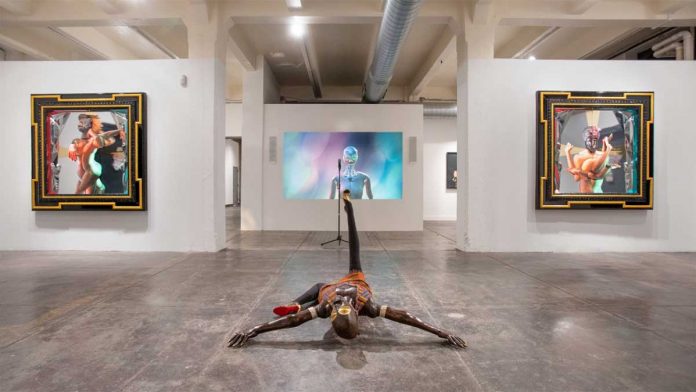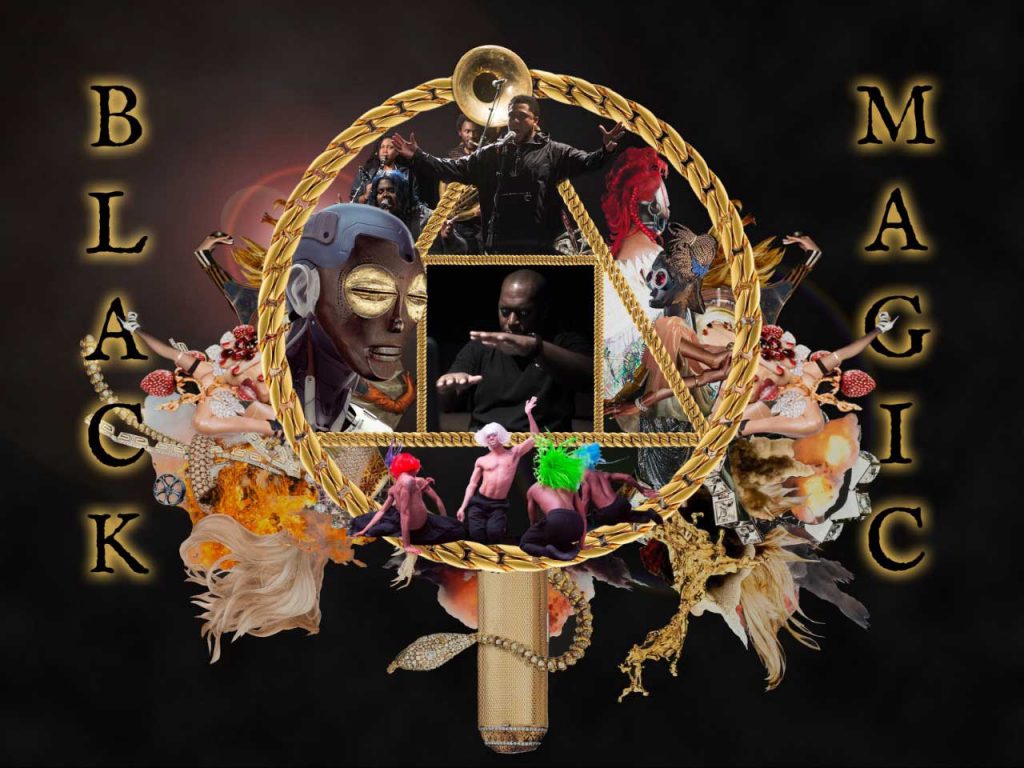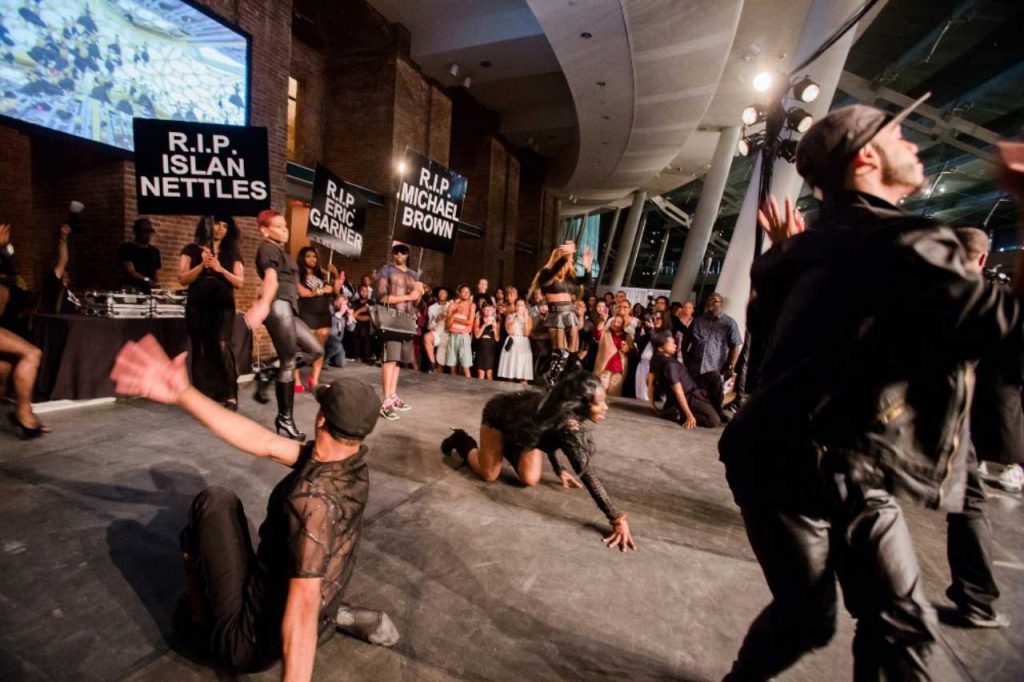
Out multidisciplinary artist Rashaad Newsome is exploring the past, present and future of Blackness, sexuality and identity with his new exhibition “Black Magic,” presented by the Philadelphia Photo Arts Center through Nov. 30.
Comprised of three separate pieces; a futuristic art exhibition (“To Be Real”), a multimedia dance performance (“FIVE”), and a ballroom show (“The Champion Ball”), “Black Magic” presents a lot of vivid imagery and influences ranging from traditional African to modern drag aesthetics.
PGN talked to Newsome, who has exhibited and performed in galleries and museums throughout the world, about how these pieces fit together and his inspiration for creating this suite of art.

Why call this exhibition “Black Magic”? Is it safe to assume that New York City is an influence?
The title came from me thinking about how I could create something akin to the power, beauty and resilience of Black people in the U.S. New York, as well as many places in the U.S, influenced the work, but most of all “Black Magic” is an attempt to make visible — or liberate — the power embedded in modes of African American creative expression.

What are the connective ideas linking the Afrofuturism of “To Be Real” with the ’70s influences of “FIVE” and the 1980-’90s ballroom culture in “The Champion Ball”?
For me, the connection between these three works is not time-based, but instead the wonder of the Black queer imagination. I feel that the imagination is incredibly essential for Black people as a form of resistance. In “To Be Real,” the works contained in the ornate frames are engaged in their own form of resistance to either expand or escape that frame. Being is the anchor of that show as it has completely escaped the frame and exists in the world of the imagination where anything is possible. In “FIVE,” the frame reemerges. As the dancers perform in the frame on the floor, the vocalist, musicians, and I imbue the dancers with improvisational energy, empowering them to imagine and create a forum that escapes the frame. In “The Champion Ball,” the framework of performing gender or capitalism that is often associated with ballroom is eviscerated, and there is a premium put on the contestants’ ability to imagine Black artists’ work in new ways.
Was it always the intention to present the three different elements of “Black Magic” as a trio of exhibitions and performance pieces?
Yes, it was important for me to show these works in concert. I wanted to have an interdisciplinary conversation between the performances, studio practice and social practices.
Should all three of these elements of “Black Magic” be experienced in a specific order or within the same time frame?
My hopes are that they can be experienced in the time frame they were designed in, but most importantly, I just want them to be experienced.
Do you think audiences generally think of issues of race, gender and sexuality as separate and exclusive? If so, how does “Black Magic” hope to change that thinking?
As “Black Magic” centers the Black experience, which for me is a very intersectional one, I hope that audiences will think about how these things coalesce and the systems of oppression that can often lurk within them. By thinking critically about their lives and the lives of others, I hope they can form strategizes to navigate them, not at the expense of others.
What do you think people from outside the queer/POC community will take away from this project?
As a Black queer man in America, most art, film and other media are not necessarily made for me; however, when engaging with that work, I can put myself in the position of the artist to get insight on their experiences. I feel Black people often have to do this, and the awesome gift of doing this helps one develop a sense of empathy. I hope that the folks outside the queer/POC community can engage with my work that way.
Do you have any other projects or exhibitions coming up?
In December, I will be staging “The Champion Ball” in Miami during Art Basel Miami Beach on Dec. 4, 2019. “Black Magic” will be traveling to Fort Mason Center for Arts & Culture in San Francisco from Jan. 10-Feb. 23, 2020 with live performances of “RUNNING” on Jan. 17 and 18, 2020.
Philadelphia Photo Arts Center presents Rashaad Newsome’s “Black Magic” through Nov. 30 at the Ice Box Project Space (1400 N. American St.) and The Rhoden Arts Center at the Pennsylvania Academy for the Fine Arts (118-128 N. Broad St.). For more information, visit https://rashaadnewsome.com or https://www.philaphotoarts.org/event/rashaad-newsome-to-be-real/
